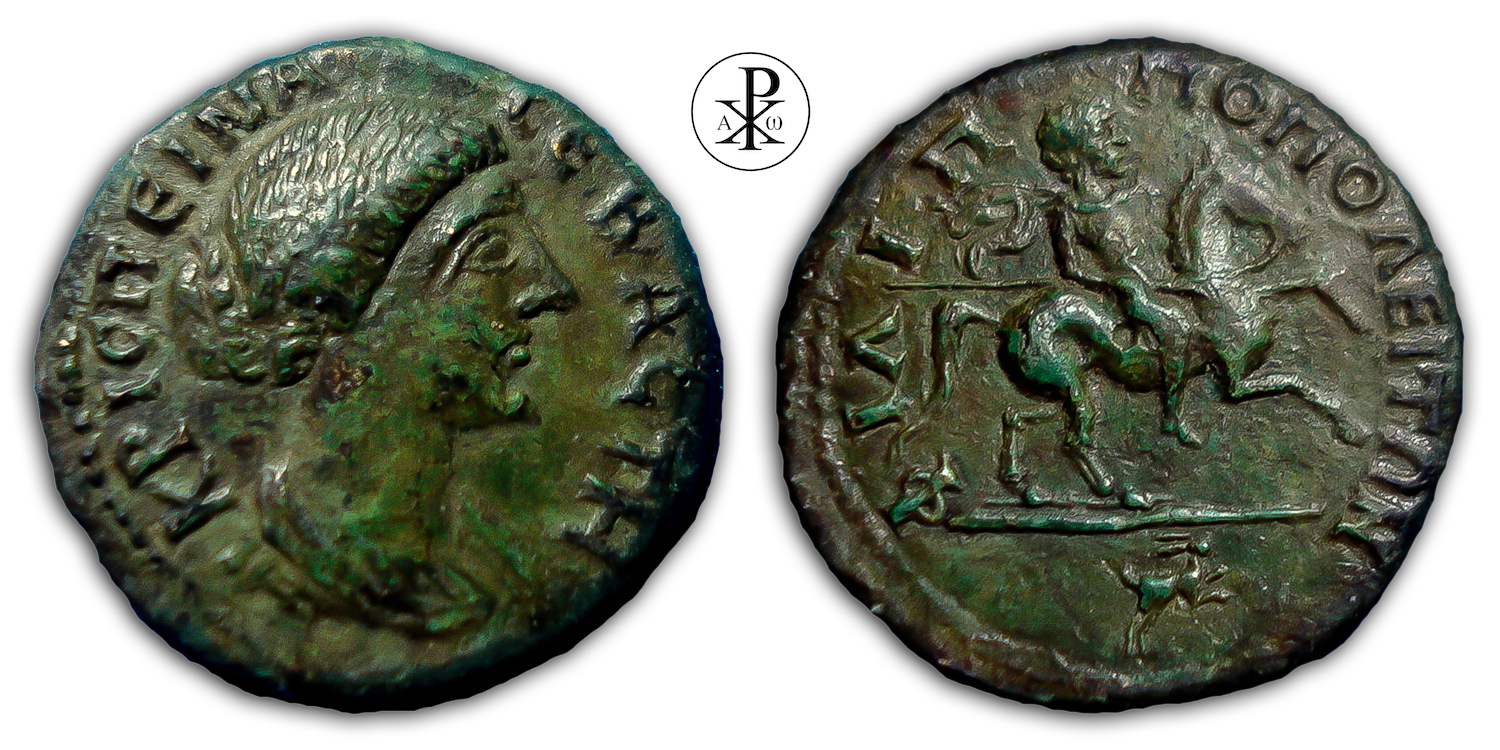Bruttia Crispina
Reign: Marcus Aurelius or Commodus
Mint: Philippopolis, Thrace
Date: 178/182 AD
Nominal: Bronze
Material: AE
Diameter: 25mm
Weight: 8.85g
Reference: RPC IV.1 7617
Reference: Varbanov Philippopolis XII.15.2
Reference: Mouchmov Philippopolis 251
RPC Online: https://rpc.ashmus.ox.ac.uk/coins/4/7617
Rare: Specimens 6 (0 in the core collections)
Provenance: N&N Collection Numismatics, Luxembourg
Pedigree: –
Special: RPC Online Plate coin
Obverse: Draped bust of Crispina, right
Inscription: ΚΡΙϹΠΕΙΝΑ ϹΕΒΑϹΤΗ
Translation: Krispeina Sebaste
Translation: Crispina Augusta
Reverse: Male figure (Commodus?) on horseback, right, holding spear horizontally; rabbit (or hunting dog) right below
Inscription: ΦΙΛΙΠΠΟΠΟΛΕΙΤΩΝ
Translation: Philippopoleiton
Translation: City of Philippopolis
Comment: Philippopolis is one of the names of the ancient city situated where Plovdiv is today. The city became one of the largest and most important in the region and was called „the largest and most beautiful of all cities“ by Lucian. During most of its recorded history, the city was known by the name Philippopolis after Philip II of Macedon. Philippopolis became part of the Roman empire and capital of the Roman province of Thracia. According to Ammianus Marcellinus, Philippopolis had a population of 100,000 in the Roman period. In 72 BC the city was seized by the Roman general Marcus Lucullus during the Third Mithridatic War but was soon restored to Thracian control. In AD 46 the city was finally incorporated into the Roman Empire by emperor Claudius. It gained city status (municipium) in the late 1st century. As Trimontium it was an important crossroad for the Roman Empire. Although it was not the capital of the Province of Thrace at this time (which was Perinthus), the city was the largest and most important centre in the province. It was the seat of the Union of Thracians and the Via Militaris (or Via Diagonalis), the most important military road in the Balkans, passed through the city. Roman times were a period of growth and cultural excellence and the ancient ruins tell a story of a vibrant, growing city with numerous public buildings, shrines, baths, theatres and a stadium. The large scale of public construction during the Flavian Dynasty (69-96 AD) led to the city being named Flavia Philippopolis. Hadrian visited the city as part of his tour of the empire and a triumphal arch was erected outside the east gate in his honour.
